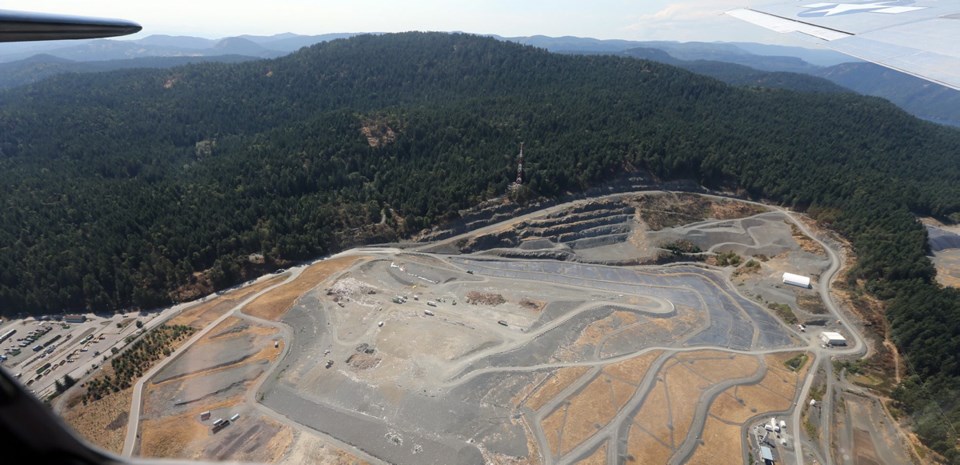Lack of co-ordination between the Capital Regional District and the provincially appointed sewage treatment project board could cost local taxpayers tens of millions of dollars in unnecessary spending, says Metchosin Mayor John Ranns.
“This is Viewfield Road all over again,” Ranns said, referring to an Esquimalt sewage-plant site the CRD bought for $17 million in 2013, then never used.
The problem is that there are parallel efforts under way on how to best handle sewage sludge, said Ranns, a member of the CRD’s integrated resource management committee.
On one hand there’s the provincially appointed board overseeing the $765-million sewage treatment project.
Plans include piping sewage sludge, the leftovers from sewage treatment, 18 kilometres from the plant that will be built at McLoughlin Point to Hartland Road landfill. At Hartland, the sludge is to be processed through anaerobic digestion into what is known as Class-A biosolids, a soil supplement Anaerobic digestion involves the use of micro-organisms to break down organic matter.
The budget for sludge treatment is $189 million. The project board has a short list of three companies vying to do the work.
At the same time, the CRD board has been talking with companies that are interested in mixing sewage sludge with solid wastes such as food scraps and processing the mixture to create revenue by generating electricity.
The kicker, Ranns said, is that several of the 10 companies interested in the work don’t need the sludge to be treated first. So, depending on the option chosen, the $189-million sludge treatment project might not be needed.
“We’re running these two processes. But the one process negates the other,” Ranns said.
“It just does not make sense to proceed with a process that we have been told by a number of major companies doesn’t need to happen.”
Ranns said several companies have said they don’t need Class-A biosolids and some of them actually use anaerobic digestion in their processes.
“So why would you fasten an anaerobic digester behind another anaerobic digester? The whole concept is absurd,” Ranns said.
“To me it’s appalling that they would even consider going ahead when we have solid proposals that say they don’t need to do that process and solid proposals that say they would be willing to undertake the whole process themselves, fiscally.”
But Victoria Mayor Lisa Helps, who chairs the CRD sewage committee, said options being looked at aren’t necessarily as firm as Ranns suggests.
“We have some people who submitted very detailed ideas and some people who just said we could do just this, this and this.”
There isn’t enough information on some of the technologies to know whether they could address the concerns of both the sewage project board and the CRD committee, Helps said.
“I don’t think that there’s anything stopping us from sharing the expressions of interest” between the CRD committee and the sewage project board. The work of the two groups is not necessarily siloed, she said.
Helps noted that the sewage project board is not tasked with developing uses for the sludge, but it is leaving the door open for doing so. As part of the call for bids to build a sludge treatment facility, the board wants an allowance to be made so that up to 50 per cent of raw sludge can be diverted for processing into a byproduct.
When the concern about possible duplication was raised by Ranns and Saanich Mayor Richard Atwell at the last CRD integrated resource management committee meeting, the committee quickly moved behind closed doors for fear of disclosing the business secrets of sludge-processing companies.
Helps said the contract for the sludge-processing plant is not being awarded until September. Meanwhile, efforts are underway to co-ordinate sludge treatment with the desire to produce a byproduct from the sludge that will make money.
“We have some time to work through this,” Helps said. “We are the stewards of both of these processes. Many of us sit on both committees and we’re trying to find a way to logically bring them together where possible.”
The CRD had been trying without success to come up with a plan for sewage treatment for some 10 years when Community Minister Peter Fassbender took the project away from local politicians in 2016 and appointed AN independent panel to oversee the sewage treatment project.



